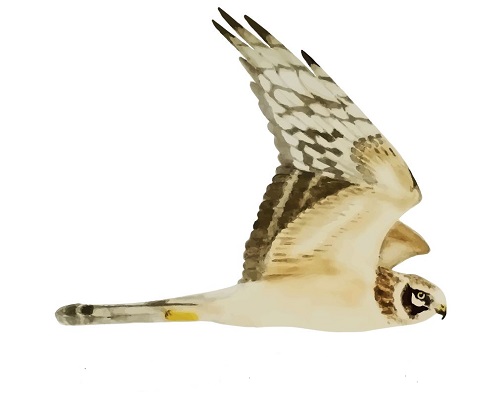Her på Skagen Fuglestations blog bringes korte nyheder i dagbogsformat om hændelser på fuglestationen.
Hits and misses
We still had strong north-western gales this morning – too strong to put our mist nets up. So instead Knut and I went out for observations from sunrise at Denmark’s northernmost observation point. Our hopes were high that the winds would bring some good numbers of common species and maybe one or two uncommon or rare birds. As soon as our telescopes were pointed towards the sea, we saw a constant stream of fulmars (mallemuk) passing to the northwest at the horizon. Gannets (sule) also showed in good numbers and the typical early morning movement of common scoters (sortand) and red-throated divers (rødstrubet lom) from Kattegat to Skagerrak was also visible. So a hit on numbers, but what about rarities? Well it was hit and miss this time. We got two smart migrating long-tailed skuas (lille kjove), but somehow managed to miss a Sabine’s gull (sabinemåge) that other observers found. Anyhood, we were happy with 2481 gannets (sule), 969 fulmars (mallemuk) and 120 red-throated divers (rødstrubet lom) migrating northwest in five hours, during which Yehonatan, Lis and Erik joined us for a short while, too.

During the same time, Judith collected some plants for the herbarium she plans to prepare during her stay at the observatory. It is now getting late for some of the flowering plants, so she wants to use her time in the rest of the week to focus on collecting cool plants. Judith uses the heavy books (“The Danish bird migration atlas”) from our library to compress the plants. Really good, that the books are finally put to good use! :-P
In the afternoon, Simon gave us a small tour around the observatory and had some tips and tricks regarding care of tourists coming to The Grey Lighthouse (Det Grå Fyr). Afterwards we had a seminar about subspecies identification of chiffchaffs (gransanger) and the pitfalls connected to that. A small session on aging chiffchaffs based on moulting strategies followed.
To refresh from the dry theoretical talk, Judith and I took our daily swim in Kattegat. There was a lot of red algae stuff in the water, which was a little disgusting. And Judith was so unlucky to hit a lion’s mane jellyfish (brandmand) and suffered the rest of the evening from that encounter.
Suddenly we heard through the grapevine, that an American scoter (amerikansk sortand) was found at the seal bunker, just a couple of hundred-meter north of the lighthouse. Yehonatan went out to find it and took some record shots. This individual might very well be the same bird that was seen for a couple of days at Nordstrand and Grenen in July (which in turn could be the one seen there as well in April). There cannot be too many birds of this American species around here…
 Male American scoter (amerikansk sortand) on the left; picture: Yehonatan Ben Aroia
Male American scoter (amerikansk sortand) on the left; picture: Yehonatan Ben Aroia
Just after finishing this blog entry (dagbogen), Yehonatan and I will go out for night catching. Wish us luck to get something!
People: Simon S. Christiansen, Yehonatan Ben Aroia, Christian Stolz, Judith Kloibhofer, Knud Pedersen, Lis Kragelund and Erik Brodersen
Music: The Dear Hunter – Migrant





